Technology and Moving with the Times
by Kay Kendall
Historical mysteries are my favorites among all crime fiction. When plotting my own books, I like to show how patterns of human nature repeat down the decades, no matter what historical age one reads about. I also confess that I relish the details that show past eras—the changes in language and attitudes, in styles of dress and architecture. Also, by not setting my stories during the present day, I can focus more on character. Not for me the world of high tech and CSI tricks. I prefer to delve into people’s personalities—to discover what makes them tick—and what causes them to murder.
But last summer I had to write about more modern technology than I like to do in my plotting. I moved from writing a storyline set in 1923 (AFTER YOU’VE GONE) to a novella that takes place in 1989. Yikes. In the Bullet Book named ONLY A PAWN IN THEIR GAME, we had to introduce a few cell phones. This put me into shock.
When author Manning Wolfe asked me to write for her Bullet Book Speed Reads project, there was a snag. She didn’t want historical mysteries. Luckily, we compromised and settled on 1989—a time that was old enough for me but not too long ago for her.
That’s how ONLY A PAWN IN THEIR GAME landed in the tense summer of 1989. The Communist hold on Eastern Europe was coming apart at the seams. The metaphorical Iron Curtain was being shredded, and the REAL Berlin Wall was quaking. Emotions ran high in international diplomatic–and SPY–circles. Into this hot cauldron of intrigue we dropped our protagonist, Ms. Sammy Strauss.
Because this was a joint project with Manning, we had to agree on most everything, and at least from my point of view, the project went along smoothly. Toughest for me to cope with though, I must say, was how much new-fangled stuff to decide to add to the plot. Manning remembered more digital gizmos than I did for the time period. That difference intrigued me. The only reason I came up with to explain that difference was that in 1989 she lived in Austin, Texas, and I lived in Ottawa, Ontario. She had a cell phone, and I didn’t until 1991, and by that time I too lived in Texas. (On the other hand, ATMs were widespread in Canada in 1983, well before they became ubiquitous in the US.)
The story of the unexpectedly exciting—and dangerous—summer of 1989 shows Ms. Sammy Strauss flying from her home in Houston, Texas, to Vienna, Austria. Although she expects a carefree time serving a summer internship at the US Embassy in Vienna, that’s not what she ends up with.
I’m not used to writing about instantaneous communication, and fortunately, in 1989 the digital revolution had not yet gotten into full swing. Sammy mentions that her cell phone doesn’t work in Europe, and so she puts it away. Good, it doesn’t figure into the plot. She uses hotel phones and receives notes from the handsome stranger she meets on the plane ride from Texas to Austria. These written notes play an important role in the plot as competing spy rings clash in desperation and encroach and then threaten her life. Is the attractive man interested in her because he is headed for romance—or is he really trying to use her as a pawn?
Plotting on my next mystery is now underway. Again I must face more advances in technology. Although I’m not terribly happy about that, I’ll have to deal with it. The story begins a year after the conclusion of Sammy’s red hot summer in Vienna, when she meets up with the cast of characters from my Austin Starr mysteries. And thereby hangs my next tale, TANGLED UP IN BLUE. (Maybe I will give Austin or Sammy a cell phone with a blue case.)
Yes, that’s another song title by Bob Dylan, and it’s perfect for one of the crimes I have planned. The year is 1991 with flashbacks to 1970. At least there won’t be cell phones in those flashbacks.
~~~~~~~

Award-winning author Kay Kendall is passionate about historical mysteries. She lives in Texas with her Canadian husband, three house rabbits, and spaniel Wills. Visit Kay at her website http://www.austinstarr.com/
or on Facebook https://www.facebook.com/KayKendallAuthor

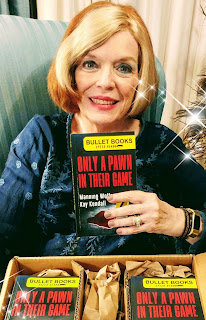

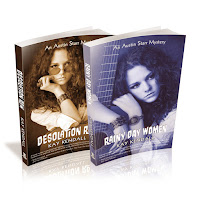
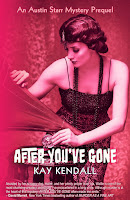
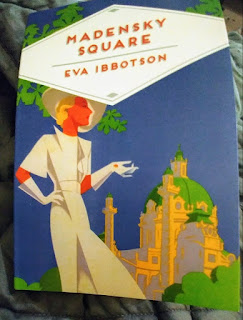
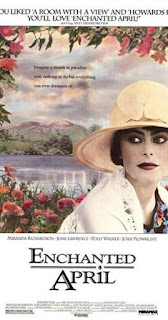





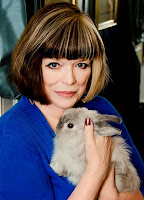
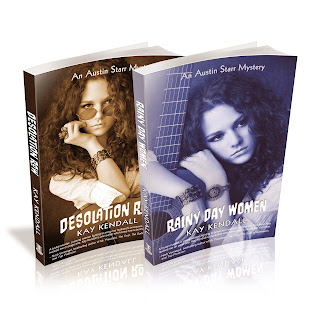

One of the perennial questions asked of us mystery authors at events is whether we use outlines or are we “pantsers.” That is, do we write by the seat of our pants, and just let the outlines be damned?
As a published author of six years’ time, having heard this question asked many times, I now know what to expect from the answers. Some use outlines, more do not, and many of us say we are sort of in the middle. We have a rough idea of where our plots are going, but we don’t make detailed outlines. In other words, to each her own.
Recently I was asked another type of question:
what type of environment do I work in?
This question I enjoyed thinking about. Here is my answer, with a twist at the end.
I keep the standard type how-to and reference books heaped around me. Turns out that is mostly for their good karma. I suppose that’s what it is as I rarely refer to them when I’m writing. Once upon a time I had a hard bound thesaurus, using it often. I adored it. But when the online dictionaries and thesaurus type websites got really good, I began to just use those.
My writer’s lair is, I confess, a dreadful mess. When I need to hunt for or double check historical facts, I start to dig through piles of books to find the needed source. My so-called system works for me.
I’ve been relieved lately to read that intelligent people are usually messy. That has to mean I’m amazingly brilliant!
When I used to work a nine-to-five job in a building full of research scientists, I saw the complete range of office space, from pristine to unbelievably messy–way worse than mine. But that was only for one man. The laboratory spaces were always well ordered.
I never understood how anyone could work at a desk day in and day out and have a neatly ordered work space. Mostly tongue in cheek, I coined this maxim–Never trust a person with an entirely clean desk. Why? Because that person is not really getting any work done.
Okay, I’ve indulged in true confessions. So now it is your turn. Is your desk neat or messy–or somewhere in between?
~~~~~~~~~~~~~~~
Author Kay Kendall is passionate about historical mysteries. She lives in Texas with her Canadian husband, three house rabbits, and spaniel Wills. Visit Kay at her website http://www.austinstarr.com/ or on Facebook https://www.facebook.com/KayKendallAuthor